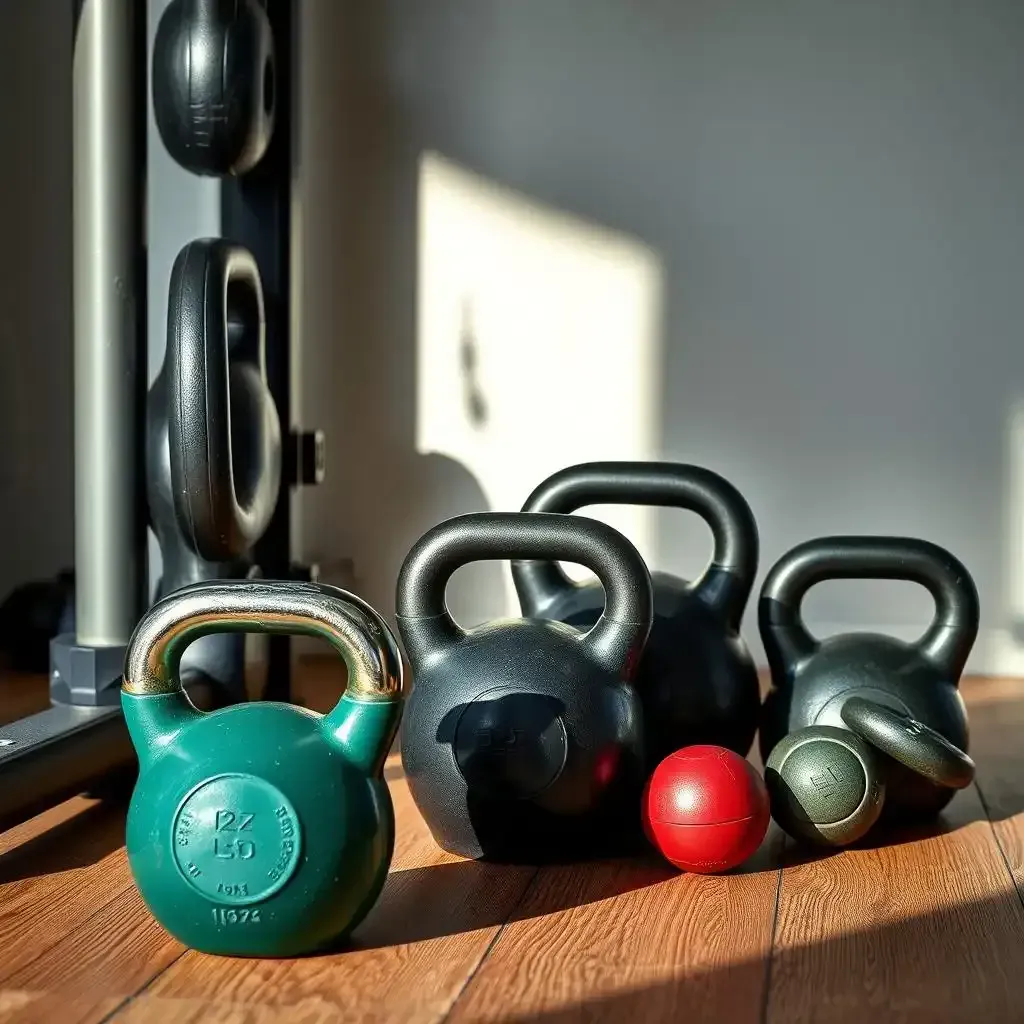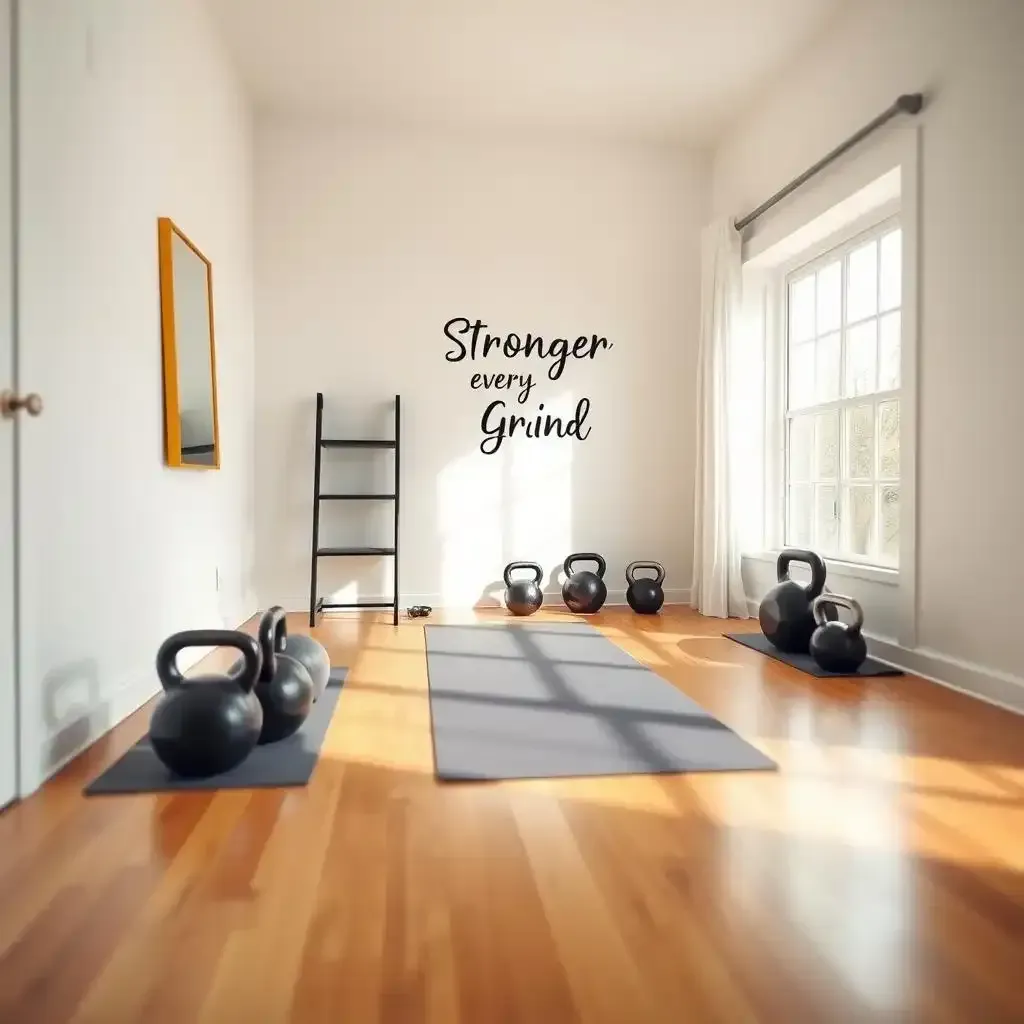Table of Contents
Thinking about adding some serious muscle-building ability to your home workout routine? Kettlebells are a fantastic way to do just that! They're incredibly versatile, offering a full-body workout that's both effective and fun. Forget bulky gym equipment; kettlebells for home use are compact, affordable, and surprisingly effective. At kettlebellworkout.homes, we're here to guide you through choosing the perfect kettlebells, designing safe and effective workouts, and creating a home gym you'll actually love. This article will cover everything from selecting the right weight and type of kettlebell to mastering fundamental exercises and building a comprehensive home workout plan. Get ready to sculpt your dream physique from the comfort of your own living room!
Choosing the Right Kettlebells for Your Home Gym

Choosing The Right Kettlebells For Your Home Gym
Weight Range: What to Consider
When it comes to choosing the right kettlebell weight, it's essential to consider your fitness goals and current fitness level. If you're a beginner, you may want to start with lighter weights and gradually increase the weight as you become more comfortable with the exercises and build strength.
Kettlebells are available in various weight ranges, from 4-16 kg (8.8-35.2 lbs) or more. Some kettlebells also have adjustable weights, which can be convenient for those who want to vary their workout routine.
When selecting a weight range, consider the exercises you plan to do and the muscle groups you want to target. For example, if you want to work on your shoulders and back, you may want to choose a kettlebell with a heavier weight.
Material: A Key Consideration
The material of your kettlebell can affect its performance and durability. Here are some common materials used in kettlebells:
- Cast Iron: A popular choice for kettlebells, cast iron is durable and can withstand heavy use.
- Steel: Steel kettlebells are also durable and can be more affordable than cast iron.
- Vinyl Coated: Vinyl-coated kettlebells have a protective layer that prevents rust and corrosion.
- Competition Grade: Competition-grade kettlebells are made from high-quality materials and are designed for heavy use.
Grip Style: A Matter of Preference
The grip style of your kettlebell can affect your comfort and control during workouts. Here are some common grip styles:
- Straight Handle: A straight handle is the most common grip style and is suitable for most exercises.
- Contoured Handle: A contoured handle provides a more comfortable grip and can reduce fatigue.
- Wide Grip: A wide grip is suitable for two-handed exercises and can provide more stability.
"Exercise is a celebration of what your body can do, not a punishment for what you ate."
Unknown
Kettlebell Workouts: Beginner-Friendly Routines for Home Use
Getting Started: Your First Kettlebell Workout
So, you've got your kettlebells – awesome! Now, let's not go crazy. Think of it like learning to ride a bike. You wouldn't jump on a racing bike and expect to zoom down a hill immediately, would you? Nope! You start slow, with training wheels (or in this case, lighter weights). My first kettlebell workout was pretty humbling. I picked a 10-pounder, thinking I was a total badass, and after about five swings, my arms felt like jelly. It's okay to start small; it's all about building that foundation. Focus on proper form before you start adding weight. Check out our guide on kettlebell basics for a solid starting point.
Remember, consistency is key. Aim for two or three short workouts a week. Even 15-20 minutes is better than nothing. Think of it as a mini-journey for your muscles! Don't try to do too much too soon. Start with simple exercises like kettlebell swings, goblet squats, and rows. Master those before moving on to fancier moves. You’ll find tons of beginner-friendly routines online, and remember to check out our other resources on easy kettlebell exercises to help you get started!
Exercise | Sets | Reps | Rest |
|---|---|---|---|
Kettlebell Swings | 3 | 10-12 | 60 seconds |
Goblet Squats | 3 | 8-10 | 60 seconds |
Kettlebell Rows | 3 | 10-12 (each side) | 60 seconds |
Building Strength and Endurance: Progressing Your Routine
Once you're comfortable with the basics, it’s time to level up! Think of your body as a garden – you need to nurture it to help it grow strong and beautiful. You can increase the weight, add more sets, or increase the number of reps. You might also try adding new exercises, like Turkish get-ups (they’re harder than they look!), or single-leg deadlifts. Remember to listen to your body. If something hurts, stop and rest. Pushing through pain is never a good idea.
A good way to track your progress is to keep a workout log. Write down the exercises you do, the weight you use, the number of sets and reps, and how you felt. This helps you see how far you've come and gives you something to celebrate. You might be surprised at how quickly you get stronger and more confident! And if you're ever stuck, feel free to check out some more advanced workouts and tips on advanced kettlebell routines to keep the challenge going!
- Increase weight gradually.
- Add more sets or reps.
- Try new exercises.
- Listen to your body!
"The body achieves what the mind believes." - Napoleon Hill
Building Your Home Kettlebell Workout Space: Setup and Safety

Building Your Home Kettlebell Workout Space Setup And Safety
Finding Your Fitness Fortress: Space and Setup
Okay, so you're ready to rock those kettlebells. First things first: you need a space, a dedicated area where you can swing, squat, and generally get your sweat on without knocking over grandma's prize-winning begonias. Think of it as your personal fitness sanctuary. You don't need a massive home gym; a corner of your living room, a spare bedroom, or even a section of your garage will do the trick. Just make sure you've got enough room to move around freely without bumping into furniture or walls. Trust me, a bruised shin is not a good way to start your kettlebell process. Think about what works best for you. A little space goes a long way! For more tips on creating the ideal environment, check out our guide on setting up your workout space.
- Clear a space of at least 6 feet by 6 feet.
- Ensure good ventilation.
- Keep a water bottle handy.
Safety First: Avoiding Kettlebell Catastrophes
Now, let’s talk safety. This isn’t just about preventing injuries; it’s about ensuring you enjoy your workouts and keep on keeping on. Kettlebells are awesome, but they’re also tools that can cause serious damage if you're not careful. Before you even think about lifting a kettlebell, take some time to learn proper form. Think of it like learning to drive – you wouldn’t get behind the wheel of a car without taking lessons, would you? Plenty of videos and guides are available online, but investing in a few sessions with a qualified trainer is a great idea, especially if you are a newbie. It’s worth the investment to learn the correct techniques and avoid nasty injuries. Plus, a trainer can help you create a personalized workout plan that matches your fitness level and goals. For more on staying safe, check out our helpful tips on kettlebell safety.
Safety Tip | Why It Matters |
|---|---|
Proper form | Avoids injuries |
Warm-up | Prepares your muscles |
Cool-down | Prevents muscle soreness |
Advanced Kettlebell Techniques and Workouts for Home
Okay, so you've conquered the basics – high five! You're swinging like a pro (almost!), squatting with confidence, and your arms aren't turning into noodles anymore. That’s awesome! Now it's time to kick things up a notch. Think of it as graduating from training wheels to a real bike, maybe even one with gears. We're talking advanced kettlebell moves here – the stuff that'll really make your muscles sing (and maybe groan a little!).
One of my personal favorites is the Turkish Get-Up. Sounds fancy, right? It kinda is. It's a full-body exercise that works everything from your core to your shoulders, and it requires serious balance and coordination. It’s like a complex puzzle for your muscles; you'll need all the pieces working together. Don’t worry; there are plenty of videos online to guide you through it, or consider checking out our guide on kettlebell techniques to build a strong foundation. Mastering this move will make you feel like a total fitness ninja. But remember, start with a lighter weight, and focus on perfect form before you go heavy.
- Turkish Get-Ups
- Clean and Jerk
- Snatch
Another excellent move to add to your arsenal is the kettlebell snatch. This is a more dynamic exercise that works your entire body, but it’s important to have good form to avoid injuries. It’s like a powerful dance between you and the kettlebell. It takes practice, but once you get the hang of it, you'll feel the capability. Remember, the key is to keep your core engaged, your back straight, and your movements controlled. Think of it as a precise ballet; every movement should be graceful and controlled. Before you try this, make sure you are comfortable with the kettlebell swing. And remember to check out our before you start your kettlebell routine.
Don't forget to warm up properly before you start any advanced exercises, and always cool down afterward. This is like prepping your car engine before a long drive and letting it cool down before you park it. You wouldn't want to start your car without warming it up, would you? A proper warm-up will prepare your muscles for the workout, helping you avoid injuries. A good cool-down will help your muscles recover and prevent soreness. You can find some great warm-up and cool-down routines on our website; check out our warm-up exercises page for more details.
Exercise | Muscles Worked | Difficulty |
|---|---|---|
Turkish Get-Up | Full Body | Advanced |
Clean and Jerk | Full Body | Advanced |
Snatch | Full Body | Advanced |
As you progress, you can start incorporating more complex exercises and routines. Consider adding plyometrics, like jump squats, to increase your explosive ability and coordination. It's like adding turbo to your fitness engine! You can also experiment with different kettlebell exercises and find what works best for you. Remember to listen to your body – if something hurts, stop and rest. Pushing through pain is never a good idea. And always prioritize proper form over speed or weight. It might take some time, but consistency and patience will lead to amazing results. And if you are ever stuck or need some extra inspiration, check out our page for more ideas.
"The difference between ordinary and extraordinary is that little extra." - Jimmy Johnson
Final Thought
Building a home gym with kettlebells is a fantastic investment in your fitness process. Remember to start slow, focus on proper form, and gradually increase the intensity and complexity of your workouts. With dedication and the right approach, you can achieve amazing results right in your own home. Happy lifting!